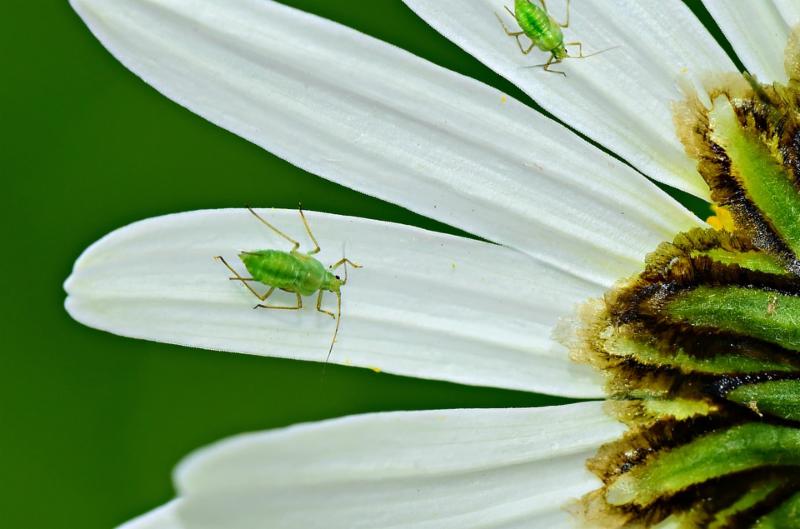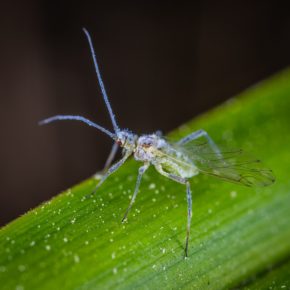

Aphids are tiny (adults are under ¼-inch), and often nearly invisible to the naked eye. Various species can appear white, black, brown, gray, yellow, light green, or even pink! Some may have a waxy or woolly coating. They have pear-shaped bodies with long antennae; the nymphs look similar to adults. Most species have two short tubes (called cornicles) projecting from their hind end.

Nymphs and adults feed on plant juices, attacking leaves, stems, buds, flowers, fruit, and/or roots, depending on the species. Most aphids especially like succulent or new growth. Some, such as the green peach aphid, feed on a variety of plants, while others, such as the rosy apple aphid, focus on one or just a few plant hosts.
• Look for misshapen, curling, stunted, or yellowing leaves. Be sure to check the undersides of leaves; aphids love to hide there.
• If the leaves or stems are covered with a sticky substance, that is a sign that aphids may have been sipping sap. This “honeydew,” a sugary liquid produced by the insects as waste, can attract other insects, such as ants, which gather the substance for food. When aphids feed on trees, their honeydew can drop onto cars, outdoor furniture, driveways, and so on.
• The honeydew can sometimes encourage a fungal growth called sooty mold, causing branches and leaves to appear black.
• Flowers or fruit can become distorted or deformed due to feeding aphids.
• Some aphid species cause galls to form on roots or leaves.
• Aphids may transmit viruses between plants, and also attract other insects that prey on them, such as ladybugs.
Stop by Payne’s North and ask our gardening experts which insecticide would work best for your particular problem.
